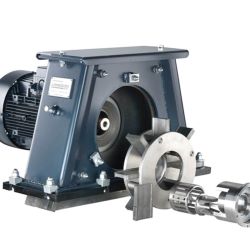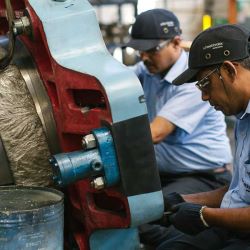Simply shift up a gear
There Wheelabrator continuous overhead monorail machine moves clustered castings through oscillating cycles for uniform blasting. The standout feature is a dual-chamber design with independent abrasive circuits, allowing production to scale up or down with demand. This adaptability gives Atik a competitive edge on the global stage.
Mr. Atik continues: "Being able to respond quickly to customer needs is vital for us. In order to use our three plants flexibly and responsively, all machines must be precisely orchestrated. Only then can we shift up a gear, take our foot of the gas, adapt. The shot blast machines have to keep pace with that. Robustness is just as important as flexibility. Shot-blast machines self-destruct by nature. It is the decades of experience of the blast machine manufacturers that counter this tendency and ensure the machine is be designed for a long service life. Wheelabrator provides us with this robustness, both in the machine’s build quality and in its spare parts."


